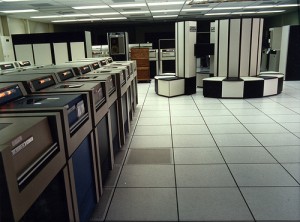Admin
Latest posts by Admin (see all)
- The SAN Storage Trinity - October 13, 2017
 Parallel file systems have long been the domain of the HPC/Supercomputer set, characterised by applications running at academic and research institutes.
Parallel file systems have long been the domain of the HPC/Supercomputer set, characterised by applications running at academic and research institutes.
Wind the clock back five years and the smaller end of a HPC storage farm, might have been 50 Terabytes.
Today though, there are
- Individual Hobbyists running the modern equivalent to a “Pirate radio station”, hosting 50TB of streaming video from their garages
- Small video post-production houses, with 8 staff, hosting 50-100TB of High Definition -HD video data
- And smaller commercial organisations (200 staff) performing Analytics and scientific processing who hold 50-200 TB online.
In our daily client engagements, we find some of these businesses, still attempt to hold and run their ‘mass data’ on Tier 1 vendor storage, often where the price per Terabyte is 2,000 to 3,000 pound per Terabyte.
This is usually a hangover of a technology or vendor decision made 5 years ago.
There is no need to do this. Businesses need to find technologies that can deliver 50TB at prices ranging from 500 pound per Terabyte and DECREASING to charges approaching a few hundred pounds per TB for bulk purchases of +200TB.
Here are the options.
An increasing number of vendors have developed storage on the Solaris ZFS platform.
Some of these ZFS based storage systems are still open source, though some have been co-opted into commercially supported platforms such as:
- Nexenta, as a software only solution where the user builds the hardware platform
- Or Nexsan NST5000, where a carefully crafted ZFS offering based on Nexsan own arrays and controllers, delivers from 10TB to petabytes at attractive per TB rates, and is fully supported by the vendor (i.e. Nexsan) without the fingerpointing that comes with deploying a software solution on your own hardware
- ScaleOut platforms such as Gluster (recently acquired by Redhat) and Lustre
- Proprietary offerings from Isilion (now EMC), BlueArc (now HDS), and NetApp.
- None of the above 3 candidate’s falls into the £500 decreasing to £200 per TB scope.
- And other offerings from Quantum, Panasas and others, where aggressive pricing can see the per TB cost potentially approach £500 per TB in the sub 50TB region, and improve once capacities of 100TB and more are considered.
To learn more about the practical offerings available one your needs exceed 50TB’s, contact us at CD-DataHouse Limited for an informal discussion.

